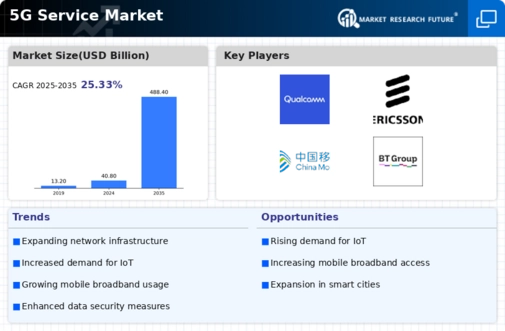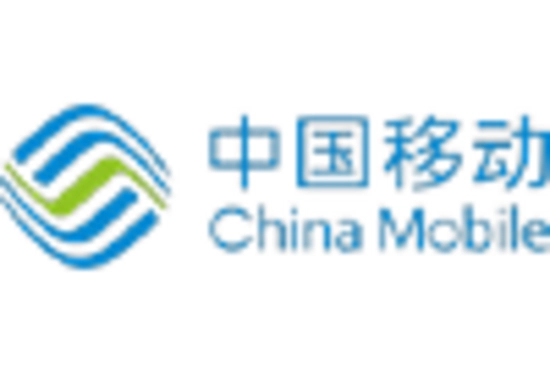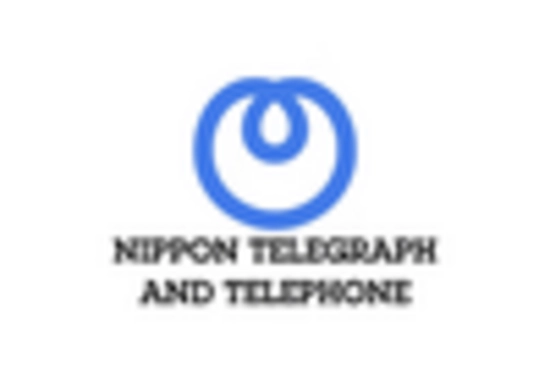Professional Services
Managed Services
Extreme Mobile Broadband
Massive Machine- Type Communications
Fixed Wireless Access
Others
Wi-Fi
High-Speed Package Access
Radio Access Technologies
Global System for Mobile
Others
5G Service Market by Vertical Outlook (USD Billion, 2022-2032)
Energy and Utilities
Automotive
Healthcare
Others
5G Service Market by Service Type (USD Billion, 2022-2032)Professional Services
Managed Services
Extreme Mobile Broadband
Massive Machine- Type Communications
Fixed Wireless Access
Others
Wi-Fi
High-Speed Package Access
Radio Access Technologies
Global System for Mobile
Others
Energy and Utilities
Automotive
Healthcare
Others
Professional Services
Managed Services
Extreme Mobile Broadband
Massive Machine- Type Communications
Fixed Wireless Access
Others
Wi-Fi
High-Speed Package Access
Radio Access Technologies
Global System for Mobile
Others
Energy and Utilities
Automotive
Healthcare
Others
Professional Services
Managed Services
Extreme Mobile Broadband
Massive Machine- Type Communications
Fixed Wireless Access
Others
Wi-Fi
High-Speed Package Access
Radio Access Technologies
Global System for Mobile
Others
Energy and Utilities
Automotive
Healthcare
Others
Professional Services
Managed Services
Extreme Mobile Broadband
Massive Machine- Type Communications
Fixed Wireless Access
Others
Wi-Fi
High-Speed Package Access
Radio Access Technologies
Global System for Mobile
Others
Energy and Utilities
Automotive
Healthcare
Others
Germany Outlook (USD Billion, 2022-2032)
Professional Services
Managed Services
Extreme Mobile Broadband
Massive Machine- Type Communications
Fixed Wireless Access
Others
Wi-Fi
High-Speed Package Access
Radio Access Technologies
Global System for Mobile
Others
Energy and Utilities
Automotive
Healthcare
Others
Professional Services
Managed Services
Extreme Mobile Broadband
Massive Machine- Type Communications
Fixed Wireless Access
Others
Wi-Fi
High-Speed Package Access
Radio Access Technologies
Global System for Mobile
Others
Energy and Utilities
Automotive
Healthcare
Others
Professional Services
Managed Services
Extreme Mobile Broadband
Massive Machine- Type Communications
Fixed Wireless Access
Others
Wi-Fi
High-Speed Package Access
Radio Access Technologies
Global System for Mobile
Others
Energy and Utilities
Automotive
Healthcare
Others
Professional Services
Managed Services
Extreme Mobile Broadband
Massive Machine- Type Communications
Fixed Wireless Access
Others
Wi-Fi
High-Speed Package Access
Radio Access Technologies
Global System for Mobile
Others
Energy and Utilities
Automotive
Healthcare
Others
Professional Services
Managed Services
Extreme Mobile Broadband
Massive Machine- Type Communications
Fixed Wireless Access
Others
Wi-Fi
High-Speed Package Access
Radio Access Technologies
Global System for Mobile
Others
Energy and Utilities
Automotive
Healthcare
Others
Professional Services
Managed Services
Extreme Mobile Broadband
Massive Machine- Type Communications
Fixed Wireless Access
Others
Wi-Fi
High-Speed Package Access
Radio Access Technologies
Global System for Mobile
Others
Energy and Utilities
Automotive
Healthcare
Others
Professional Services
Managed Services
Extreme Mobile Broadband
Massive Machine- Type Communications
Fixed Wireless Access
Others
Wi-Fi
High-Speed Package Access
Radio Access Technologies
Global System for Mobile
Others
Energy and Utilities
Automotive
Healthcare
Others
Professional Services
Managed Services
Extreme Mobile Broadband
Massive Machine- Type Communications
Fixed Wireless Access
Others
Wi-Fi
High-Speed Package Access
Radio Access Technologies
Global System for Mobile
Others
Energy and Utilities
Automotive
Healthcare
Others
Professional Services
Managed Services
Extreme Mobile Broadband
Massive Machine- Type Communications
Fixed Wireless Access
Others
Wi-Fi
High-Speed Package Access
Radio Access Technologies
Global System for Mobile
Others
Energy and Utilities
Automotive
Healthcare
Others
Professional Services
Managed Services
Extreme Mobile Broadband
Massive Machine- Type Communications
Fixed Wireless Access
Others
Wi-Fi
High-Speed Package Access
Radio Access Technologies
Global System for Mobile
Others
Energy and Utilities
Automotive
Healthcare
Others
Professional Services
Managed Services
Extreme Mobile Broadband
Massive Machine- Type Communications
Fixed Wireless Access
Others
Wi-Fi
High-Speed Package Access
Radio Access Technologies
Global System for Mobile
Others
Energy and Utilities
Automotive
Healthcare
Others
Professional Services
Managed Services
Extreme Mobile Broadband
Massive Machine- Type Communications
Fixed Wireless Access
Others
Wi-Fi
High-Speed Package Access
Radio Access Technologies
Global System for Mobile
Others
Energy and Utilities
Automotive
Healthcare
Others
Professional Services
Managed Services
Extreme Mobile Broadband
Massive Machine- Type Communications
Fixed Wireless Access
Others
Wi-Fi
High-Speed Package Access
Radio Access Technologies
Global System for Mobile
Others
Energy and Utilities
Automotive
Healthcare
Others
Professional Services
Managed Services
Extreme Mobile Broadband
Massive Machine- Type Communications
Fixed Wireless Access
Others
Wi-Fi
High-Speed Package Access
Radio Access Technologies
Global System for Mobile
Others
Energy and Utilities
Automotive
Healthcare
Others
Professional Services
Managed Services
Extreme Mobile Broadband
Massive Machine- Type Communications
Fixed Wireless Access
Others
Wi-Fi
High-Speed Package Access
Radio Access Technologies
Global System for Mobile
Others
Energy and Utilities
Automotive
Healthcare
Others
Professional Services
Managed Services
Extreme Mobile Broadband
Massive Machine- Type Communications
Fixed Wireless Access
Others
Wi-Fi
High-Speed Package Access
Radio Access Technologies
Global System for Mobile
Others
Energy and Utilities
Automotive
Healthcare
Others

















Leave a Comment